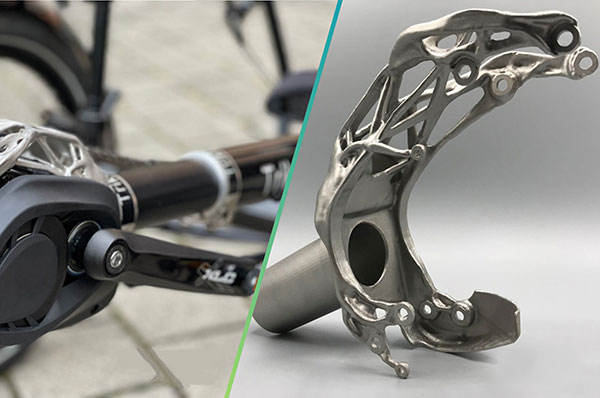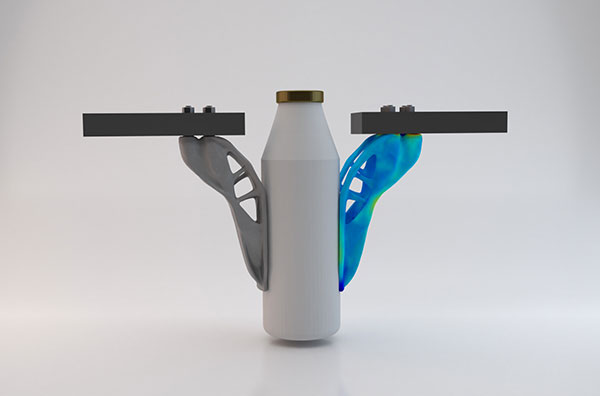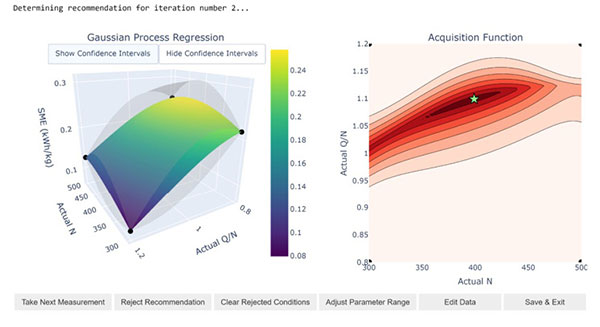AI, Generative Design and the Next-Gen Engineer
Increasing adoption of AI, ML and generative design makes engineers curious what the technology means for the future of design.

Generative design will foster streamlined processes, production and products. The time freed up can be used to develop further variants to create smarter products. Image courtesy of Hexagon.
Latest News
April 12, 2022
Machine learning (ML) and artificial intelligence (AI) are an inherent part of generative design, with automation taking over some portion of engineering and design exploration. But there are questions surrounding how design firms can blend the technology with human expertise.
Engineers are human capital. Throughout human history, great minds as diverse as Leonardo Da Vinci to Nikola Tesla and James Watt—pillars of innovation from live humans who walk, talk and think—have been the lifeblood of the march of progress in technology and innovation. So, what about the engineer?
Investing in Humans With a Dash of AI
“The engineer will remain the driving force of product design,” says Dr. Gereon Deppe, product marketing manager for generative design at Hexagon’s Manufacturing Intelligence division. “The engineer now has a co-pilot that frees up valuable time from routine, repetitive tasks. Engineers will supervise the software’s activities and review the results for plausibility and potential mistakes. Engineers will have additional time to focus on more creative tasks, such as conceptualization to cope with rising product complexity in many industries.”
If the role of the engineer has a solid foundation, what will the future of design be when AI and ML are inherently a part of all lifecycle phases? It seems that new wave AI and ML are complementary to the human engineer. This technology finds solutions that aren’t quickly found and are way too complex for the human mind to generate.
“AI and ML can change the role of the engineer in a couple ways,” says Mike Connell, chief operating officer and chief digital transformation officer at Enthought. “In some cases, AI/ML can reduce the complexity of engineering design tasks so that an operator can handle them instead of a certified engineer, and in other cases, it can enhance the capabilities of an engineer to what previously would have been superhuman levels.
“An example of the former is a genetic algorithm that discovers designs for improved antennas that then only must be verified by an operator instead of the whole thing having to be designed by an engineer,” Connell says. “An example of the latter is an AI system that takes an engineering design for a complex microchip from an engineer and figures out a layout of wires that will implement it—something that engineers would have had to do manually without AI and wouldn’t be possible for a human at the level of complexity represented by modern microchips.”
Automation Anxiety Redux?
Increased AI adoption always prompts concern about “automation anxiety,” a term that refers to technology replacing human beings. Though it’s mostly a well-worn term when professionals talk about robotics and automated machines, it’s in the back of everyone’s minds when we contemplate the future of engineering design with the full and steady arrival of AI.
The way design engineers look at man versus machine must change. AI and generative design must be viewed more as a pathway to more iterations, more possibilities and more solutions against problems that are more complex.
“Design workflows are changing, and improving, with the adoption of generative design technologies,” says Jiani Zhang, executive vice president, chief software officer for Capgemini Engineering. “Generative designs help to accelerate the design workflows—enabling us to design more complex products as the computational trial-and-error systems allow engineers to iterate through many more versions.”

Hexagon’s Deppe is also aligned with the concept that automation is a quiet conduit that stitches a patchwork of technologies together.
“Increased automation will further advance generative design,” says Deppe. “For instance, engineers will leverage automated design of experiments to explore the full design space. We will see a seamless coupling of different software that will grow together and be heavily integrated. Coupled with integrated manufacturing and sensors, generative design will become even smarter, eventually reaching a [new] level of autonomy.”
Optimization and First to Market
Jiani adds to the cheer for automation as a tool that can help solve more complicated problems, and remove some of the more repetitive, mechanical aspects of engineering.
“Fast, iterative design also helps to quickly try numerous versions and optimize solutions,” she says. “This allows our engineers and designers to get to the next level, where they can focus on core design rules and guidance.”
For categories such as electronic and printed circuit board (PCB) design, the automation afforded by AI and generative design is a value-add and one that could fill the gap for electronic designers. AI is the horsepower that takes years of experience to develop and isn’t always part of a college engineering curriculum.
“Today, there exist many auto-routers and workflows that parallelize layout tasks in systems design,” says Barbara Cramer, product management group director for system, package and board at Cadence. “AI and generative design would take this automation a step further at a time where there is great need for automation of the physical implementation of board layout.
“Many designers in this field are approaching retirement without a younger workforce to replace their skills,” Cramer says. “Colleges are not offering the curriculum that PCB designers require, namely design, fabrication, assembly and test. Without continued automation in workflows, the systems space will reach critical levels as the layout designers of today contemplate retirement. Generative design and AI would enable an engineer to guide the layout of a design through analysis and physics-based rules.”
Generative designs and the use of AI also present the bonus of precise optimization.
“The only way to industrialize the generative engineering process is through an end-to-end integrated environment where system performance simulation defines the optimization requirements,” says Tod Parrella, senior manager, NX design product management, Siemens Digital Industries Software. “AI-driven exploration and optimization takes into consideration multidisciplinary requirements and constraints.
“Design validation occurs in the system context,” Parrella adds. “Engineering data seamlessly flows downstream to manufacturing. Configurations are stored, managed and can be reused. In-field data analytics are used to provide insights that improves future product and production performance.”
Optimization may be part of a solution that helps engineers speed up the design process. When we think of it that way, AI and generative design is a big help and certainly does not hinder the time to market for cutting-edge products. This comes at a time when time to market is an essential factor in design. There’s a world of competition nowadays. Those who master whatever technology is available to help them optimize and get their products into the hands of end users quickly are a huge asset.

“For many forms of AI/ML, large volumes of data are needed to train the production models,” says Enthought’s Connell. “Scientific and engineering data can be expensive to collect and there often isn’t much of it produced per iteration.
“One application of automation in generative design, therefore, is to automate the data collection processes so a corpus of training data can be collected to get the whole AI/ML process started,” Connell adds. “Another direction is to move beyond automating current design workflows and changing the relationship between the engineer and the work. In constraint-based design, for example, the engineer doesn’t need to design the component of interest, but rather designs a set of constraints that can be fed into the AI/ML system to produce a superior design rapidly.”
Technology is more prominent today, than perhaps any other time in history. AI can make us wonder if we’ll look back and ask, “Remember life before we used AI?” We probably will and tip our hat to nostalgia, while looking with wonder at what we have and will accomplish with the use of AI and generative design, now and into the future.
More Cadence Coverage
More Hexagon Manufacturing Intelligence Coverage
More Siemens Digital Industries Software Coverage
Subscribe to our FREE magazine, FREE email newsletters or both!
Latest News
About the Author
Jim Romeo is a freelance writer based in Chesapeake, VA. Send e-mail about this article to DE-Editors@digitaleng.news.
Follow DE






